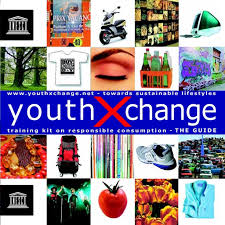
The conservation of biodiversity and its equitable and sustainable use depend on education. Additionally, mainstreaming biodiversity depends on it. Communities’ efforts to achieve SDG 4 (inclusive and high-quality education) as well as biodiversity and ecosystem services are at risk due to the loss of indigenous and local knowledge and the resulting reduction in sustainable traditional land use. Therefore, incorporating biodiversity into educational programs is essential.
Unsustainable logging and poaching of wild animals are two examples of how biodiversity is sometimes viewed as a resource to be exploited, leading to a widespread lack of awareness of its significance. In order to accomplish the goals of the SDGs and the CBD, communication regarding biodiversity is an essential issue that needs to be addressed.
Education is crucial to the long-term viability and
UNESCO’s role in education
The global Education for Sustainable Development (ESD) agenda is spearheaded by UNESCO, which also actively promotes biodiversity education. With the help of the UNESCO Chairs and the UNESCO Associated Schools Network (ASPnet), the organization has started initiatives to improve biodiversity education and learning, particularly in the areas of teacher preparation and the creation of educational resources in relation to biosphere reserves, World Heritage sites, and UNESCO Global Geoparks.
UNESCO actively supports the UN Decade of Biodiversity, the implementation of Aichi Biodiversity Target 1, and communication, education, and public awareness of the CBD Plan of Action 10 (improving formal and informal biodiversity education).
The Global Ocean Science Report provides guidance on how to strategically invest in ocean science capacity, particularly for women and scientists from SIDS and Africa who study ocean biodiversity.

Pirque Agro-ecological School: promoting culturally acceptable, socially just and ecologically sound education (Chile)

In order to apply this relationship to the environment in its educational program, the Pirque Agro-ecological School is the first educational establishment in Chile to adopt an innovative teaching method based on student-teacher trust. Students who have been rejected from other schools and those who wish to pursue agricultural training are given preference at the school. Seventy-five percent of the more than 2,000 students who have attended since the school’s founding in 2005 have earned a technical diploma in agriculture and livestock, and all of them have found employment right away after finishing their education.
Indigenous knowledge transmission of the Mayangna in Nicaragua

The Mayangna people of the BOSAWAS Biosphere Reserve in Nicaragua have collaborated with UNESCO’s Local and Indigenous Knowledge Systems (LINKS) program to record their indigenous knowledge, particularly regarding fish and turtles, and to create educational resources that can be utilized in classrooms. By offering resources that incorporate Mayangna knowledge into the classroom, the goal is to inspire teachers and students to become more familiar with the wisdom of their elders and other community members. Improving non-Mayangna children’s and the general public’s respect for Mayangna knowledge is another goal. They might not be aware of the knowledge that the Mayangna people possess or their part in maintaining the BOSAWAS biosphere reserve. Posters, teacher’s guides, and books in Spanish and Mayangna are among the materials created.
Knowledge
Awareness and communication

In order to secure the high-level support required across governments, the UN system, and civil society to inform the negotiations of a post-2020 global biodiversity framework, one of the main challenges is to promote awareness of the significance and urgency of biodiversity mainstreaming within the framework of Agenda 2030. Developing a shared, compelling story to convey biodiversity to civil society and political audiences is another difficulty. In order to inspire them to become active participants in this shift towards resilient societies, this narrative must be able to involve important stakeholders, such as the private sector, business, and youth.
Through the co-design of toolkits and the dissemination of tangible examples of effective biodiversity management, UNESCO’s branding and communication initiatives address the values of biodiversity and stakeholder engagement.
Great Apes Survival Partnership (GRASP)
The goal of UNESCO’s Man and the Biosphere program is to secure the long-term survival of chimpanzees, orangutans, gorillas, and bonobos in Africa and Asia through the Great Apes Survival Partnership (GRASP).
GRASP is a unique partnership of almost 100 national governments, conservation groups, research institutes, United Nations (UN) agencies, and private businesses, coordinated by UNESCO and the UN Environment Programme (UNEP).
Preserving the habitats of Great Apes
UNESCO/UNEP YouthXchange Guidebook on Biodiversity and Lifestyles

This guidebook, which was created by UNEP and UNESCO in close coordination with the CBD Secretariat, assists youths between the ages of 15 and 24 in learning about the various facets of biological and cultural diversity and in acquiring the necessary skills to take action for its preservation. The handbook untangles the relationships between food, consumption, culture, and biodiversity conservation and emphasizes the relationships between young people’s lifestyle choices and biodiversity. By giving young people a place to start, the aim is to encourage learning how to protect biodiversity through responsible lifestyle choices.
